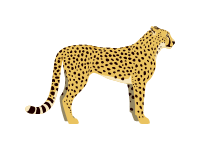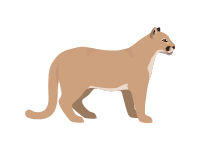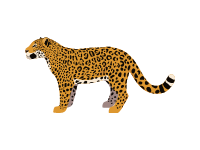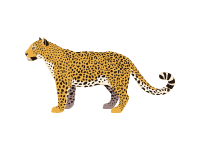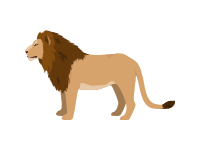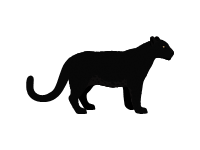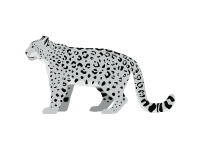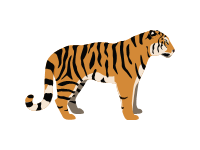Lion, large, powerfully built cat (family Felidae) that is second in size only to the tiger. The proverbial “king of beasts,” the lion has been one of the best-known wild animals since earliest times. Lions are most active at night and live in a variety of habitats but prefer grassland, savanna, dense scrub, and open woodland. Historically, they ranged across much of Europe, Asia, and Africa, but now they are found mainly in parts of Africa south of the Sahara. An isolated population of about 650 Asiatic lions constitute a slightly smaller race that lives under strict protection in India’s Gir National Park and Wildlife Sanctuary. The lion is a well-muscled cat with a long body, large head, and short legs. Size and appearance vary considerably between the sexes. The male’s outstanding characteristic is his mane, which varies between different individuals and populations. It may be entirely lacking; it may fringe the face; or it may be full and shaggy, covering the back of the head, neck, and shoulders and continuing onto the throat and chest to join a fringe along the belly. In some lions the mane and fringe are very dark, almost black, giving the cat a majestic appearance. Manes make males look larger and may serve to intimidate rivals or impress prospective mates. A full-grown male is about 1.8–2.1 metres (6–7 feet) long, excluding the 1-metre tail; he stands about 1.2 metres high at the shoulder and weighs 170–230 kg (370–500 pounds). The female, or lioness, is smaller, with a body length of 1.5 metres, a shoulder height of 0.9–1.1 metres, and a weight of 120–180 kg. The lion’s coat is short and varies in colour from buff yellow, orange-brown, or silvery gray to dark brown, with a tuft on the tail tip that is usually darker than the rest of the coat.
